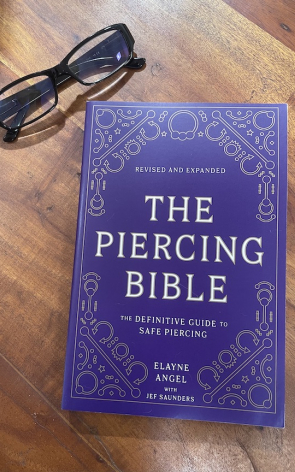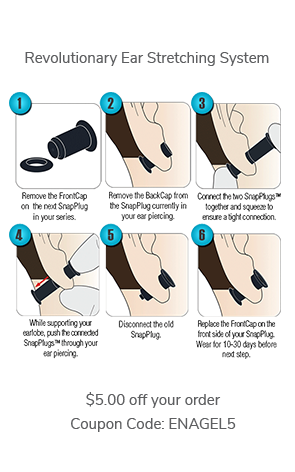I received the following message through the contact page of this website:
Thank you for all of you're info and sharing because of your page. I found a piercer that was so amazing asked questions which she readily answered and got my VCH done and it is fabulous I love it. What I'd like to know is, its been almost a year since I've had mine and I'm going to my annual checkup and would like to remove it for probably 2 hours or so. How quickly does a VCH piercing close or get tighter to make it difficult placing the jewellery back in?
My reply:
Hi Hannah,
Thanks for the feedback; I'm so glad that you had a good experience and that you are enjoying your piercing.
My suggestion is, if you like your piercing, leave your jewelry in place. It will not be in the way during the exam, and most doctors have seen body piercings before. The truth is, the VCH has a tendency to shrink and close quickly on many women, though a few find they can easily take the jewelry in and out after healing. If you do plan to remove it, you should get an insertion taper to try to help you put it back in. I'm not joking when I tell you I've known women to take them out for less than an hour and not be able to get the jewelry back in!
This is from my book, The Piercing Bible--The Definitive Guide to Safe Body Piercing:
Insertion Tapers for Jewelry Changes
If you are a novice and you wish to swap out your own jewelry, an insertion taper is invaluable to keep the channel open and avoid excess trauma. Its tapered shape helps to slide the existing ornament out and ease the new one into place.
A taper that does not correspond to the gauge and style of the jewelry you are putting in can be worse than not having one at all. Internally threaded jewelry uses a pin-coupling taper (the back end is formed into pin that fits into the hole tapped in the jewelry) or a threaded-pin taper (the back end screws into the jewelry). Fixed-bead rings, captive bead rings, and most externally threaded jewelry use a concave taper (the con- cave back end of the taper connects with the convex end of the jewelry). See “Insertion Tapers,” page 63. To avoid an unpleasant surprise, check the fit of your taper with your new jewelry before removing what you’re wearing.
If you feel confident that you can follow the old jewelry with the new (and you are not stretching up), then the taper is not required. But, if your old jewelry comes out before the new piece passes through, finding the hole can be harder than you think. Trying to shove jewelry through a channel that has shrunk is not only painful, but it is also traumatic to the tissue, especially for a recently healed piercing.
There's also a section containing step-by-step instructions for inserting jewelry using an insertion taper.
If you're interested, orders for the book are being filled by the Association of Professional Piercers: http://www.safepiercing.org/publications/the-piercing-bible/
Call toll free: 888 888-1APP or email: [email protected]. I'm the Medical Liaison for the organization. The APP is a non-profit organization dedicated to disseminating vital health and safety information about piercing to piercers, piercees, medical professionals, legislators, and the general public. A portion of the proceeds from the book goes to the organization, and you will received a signed copy of my book.
Alternatively, you can get it from major booksellers, or Amazon.com:
http://www.amazon.com/dp/1580911935?tag=buckangelcom-20&camp=14573&crea…;
Let me know if you have any other questions.
Sincerely,
Elayne
Elayne Angel, Author
The Piercing Bible--The Definitive Guide to Safe Body Piercing
Medical Liaison, Association of Professional Piercers
[email protected]
http://piercingbible.com/
http://www.facebook.com/elayneangel
http://twitter.com/elayneangel
http://www.linkedin.com/in/authorelayneangel




